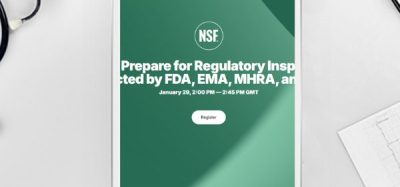Can automated buffer management systems overcome bioprocessing bottlenecks?
Posted: 13 April 2023 | Catherine Eckford (European Pharmaceutical Review) | No comments yet
Researchers have developed a new automated buffer management system that offers supply to continuous downstream process for 10 days with consistent quality.


A new automated buffer management system (BMS) that includes buffer volume monitoring, automatic ordering, preparation and delivery of buffers to the buffer-consuming purification systems has been developed by Swedish researchers.
The study from Lund University reconfigured a chromatography system to perform buffer formulation.
Buffer management in biopharmaceutical purification is usually performed manually in small scale operations. It can become a bottleneck when running integrated continuous purification processes for prolonged periods.
Researchers demonstrated that the fully automated BMS could “offer a solution to the buffer management bottleneck on lab scale for integrated continuous downstream processing.”
The novel system formulated all buffers from stock solutions and water according to pre-specified recipes. A digital twin of the physical system introduced in research software enabled a fully automated BMS operation.
Isaksson et al. showed that the BMS system performed automatic monitoring of buffer volumes, buffer order handling as well as buffer preparation and delivery.
No lab-scale buffer system that has the capability to perform the preparation and delivery of the buffers, has previously been proposed, the researchers theorised. Neither is a system able to handle automatic orders without operator intervention.
No lab-scale buffer system that has the capability [to handle] automatic orders without operator intervention, has previously been proposed”
The research software was also used for full automation and control of the buffer system. This could run independently without operator input. It could handle buffer management for one or several connected buffer-consuming purification systems.
To demonstrate the capability of the developed system, it was integrated with a continuous downstream process. It supplied all nine required buffers to the process equipment during a 10-day operation.
How much stock did the automated system process?
The automated buffer management system processed 55 orders and delivered 38l of buffers, corresponding to 20 percent of its capacity. The pH and conductivity profiles observed during the purification steps were consistent across the cycles. No buffer capacity issues were observed at the time.
Based on the average preparation time measured, the system could prepare around 18l per day if run at full capacity.
Thus, the system would be capable of handling buffer management and preparation for a more volume intensive downstream process, the researchers predicted.
Yet running the system at 100 percent capacity would significantly increase the risk that a buffer would not be delivered in time. The queue system was based on a first-in-first-out basis and handled all orders the same. Therefore, the order that came in first, would be prepared first, the study noted.
Isaksson et al. stated an alternative queue system with prioritisation on certain buffers based on how soon the buffers would be needed, would help utilise the buffer preparation capacity in a more efficient way.
To assess the buffer formulation reproducibility, the variation in conductivity and pH from the average value, across selected cycles, was calculated. It was within ±0.89 percent in conductivity and ±0.045 in pH. This is well in line with the typical specification for buffer release. This means the buffer preparation could be performed almost without operator intervention.
The buffer management system
The BMS was integrated with a continuous downstream process for antibody purification and supplied the purification systems with all necessary buffers during a 10-day operation.
Features of the system included:
- Buffer volume monitoring
- Automatic buffer order handling
- Automatically prepared and delivered buffers to connected buffer-consuming clients.
Manually monitoring the buffer volumes remaining in the client flasks was not needed. This offers a major benefit whereby buffers can be prepared outside of normal working hours.
Manual refilling of stock solutions and smaller corrections of the volume data saved in the software was a required non-automated task.
Utilising a stock blending approach for buffer preparation, also offers increased flexibility, since a small number of stock solutions can be used to prepare a wide range of buffers, the authors stated.
Testing the capabilities of the buffer management system
The system precision during buffer preparation was high. Mixing and delivery were performed without issues and the buffer quality was stable over time.
With the BMS, buffers are freshly prepared, when they are needed. The automated system does not require large quantities of buffers to be mixed in advance and stored for days or weeks.
The highly concentrated stock solutions are also less likely to expire and overall, this results in less waste and promotes sustainability.
The automated BMS has been detailed in a paper published in the Journal of Chromatography A.
Related topics
Bioprocessing, Continuous Manufacturing, Downstream, Impurities, Lab Automation, Lab Equipment, Manufacturing, Processing, Production, Technology









